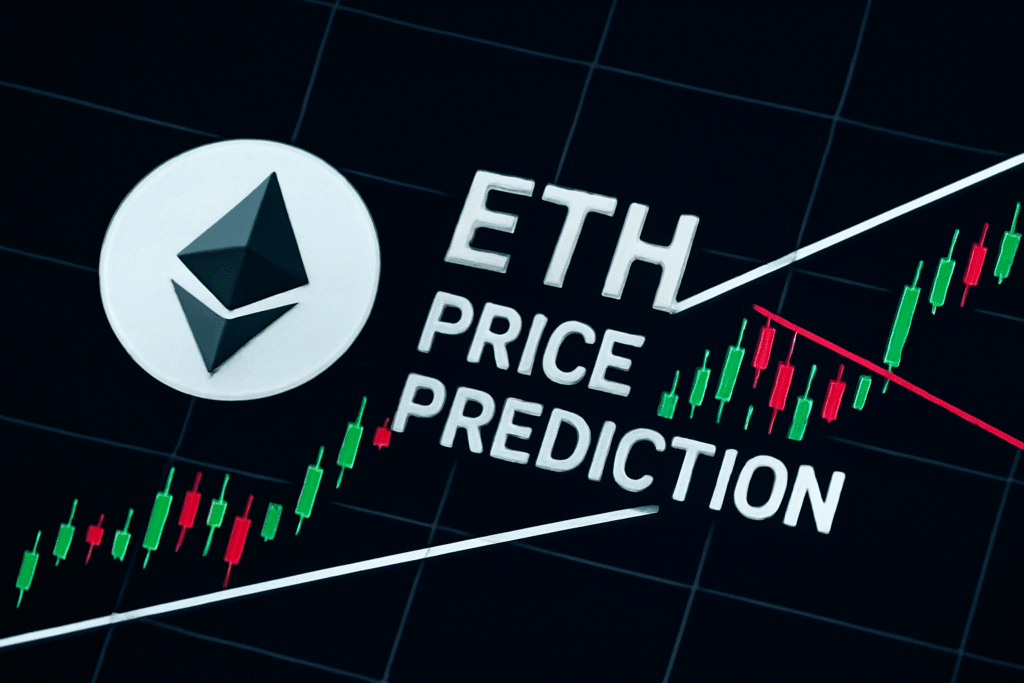Ethereum is the second largest cryptocurrency in the world. Ethereum’s next major upgrade, Pectra, will be released on May 7th. Vitalik Buterin proposed replacing the Ethereum Virtual Machine (EVM) Bytecode with RISC-V.
Ethereum has returned to the spotlight as traders prepare what could be a decisive breakout year.
With the Pectra upgrade scheduled for May 7th, the Ethereum blockchain is undergoing major changes, combining two long-term extensions (Prague and Electra).
At the same time, long-term expectations are being formed with increased staking activity, improved scalability through layer 2 solutions, and suggestions for overhauling Ethereum virtual machines.
These upgrades, combined with lower gas prices and rising developer activity, drive an updated forecast that brings ETH’s 2025 to nearly $6,000.
Ethereum’s position as the world’s second largest cryptocurrency by market capitalization continues to attract institutional attention, even amidst volatility.
The ability to support decentralized applications and token ecosystems is critical to the future of cryptographic applications.
As activities move to cheaper sidechains, the basic layer is evolving with efficiency in mind.
The initial signal shows the momentum of ETH construction
Ethereum began to show early signs of recovery after months of stagnation in prices.
ETH is currently trading at $1,841 above the simple nine-day moving average, with a relative strength index of 58.3, suggesting building momentum.

Source: CoinMarketCap
Analysts note that prices are integrated in the range of $1,600 to $1,900, forming a potential round bottom pattern.
If ETH breaks past $1,900, the next resistance could possibly appear near $2,200.
Gas fee revenue fell to 3.18 ETH in April, with average gas prices reaching $0.16, a four-year low, but lower network costs make Ethereum more accessible to users.
The sudden decline in base layer activity has sparked sustainability concerns, but it also shows a shift in transactions to Layer-2, such as arbitrum and base.
Pectra and staking add long-term value
Ethereum’s next major upgrade, Pectra, will be released on May 7th with various technical improvements set to be introduced.
By combining Prague and Electra upgrades, Pectra aims to streamline validator operations and reduce delays.
In addition to this, co-founder Vitalik Buterin proposes replacing the widely used open source instruction set architecture, Ethereum Virtual Machine (EVM) Bytecode with RISC-V.
When implemented, this will help Ethereum to more closely align with traditional computing infrastructure and increase future compatibility.
Eth Staking is also on the rise, and the Ethereum 2.0 network is gaining interest from long-term holders.
Combined with Layer-2 scaling solutions and low transaction costs, these developments enhance the fundamentals of Ethereum as a distributed application platform.
ETH predictions show a wide range
Ethereum price outlook for 2025-2030 varies greatly depending on market sentiment, adoption rates and global macroeconomic factors.
In the near future, ETH can test resistance at $2,400 by the end of 2025 if the broader crypto market is actively moving.
However, unless momentum is built, the rise is expected to be limited to nearly $2,500.
Coinpedia’s forecast suggests that ETH could reach a new high of $5,925 in 2025.
The projected price range for 2025 is between $2,917 and $5,925, with an average of around $4,392.
By 2026, the top range will increase to $6,610, with forecasts reaching $15,575 by 2030.
Over a longer time frame, estimates indicate further growth.
For 2040, ETH could reach $123,678, with a potential peak of $255,282 in 2050.
However, annual estimates also include the possibility of low and midrange, indicating that investors’ attention remains.
Other companies have a variety of forecasts. Shangelly expects $4,012.41 in 2025 and up to $24,196 in 2030. CINCINCODEX is seeing its 2025 high of $6,540.51. And Binance projects a more conservative $3,499.54.
These forecasts highlight how Ethereum’s value is tied to both network upgrades and adoption in a wider market.
Its future trajectory relies on continuous technological innovation, staking incentives and decentralized finance use cases.


